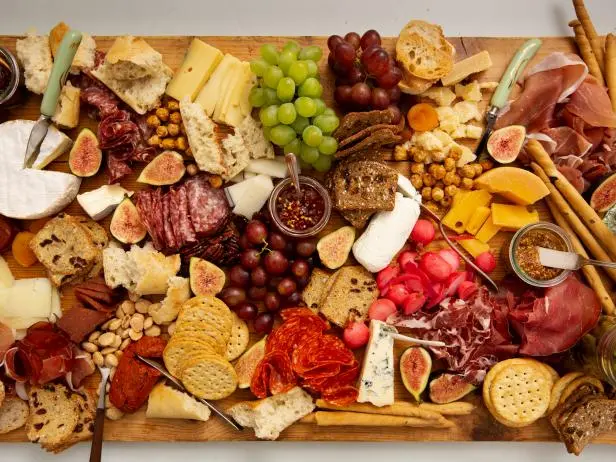
Create the Perfect Charcuterie Board: Tips & Ideas: Complete Guide
What's in This Article
Charcuterie boards have become a quintessential element of modern entertaining, offering a delightful mix of flavors and textures. The perfect charcuterie board combines cured meats, a variety of cheeses, and an array of accompaniments like fruits, nuts, and condiments. This guide will explore the essentials of creating a charcuterie board, from selecting the right ingredients to mastering presentation techniques.
Whether you're hosting a casual get-together or a formal event, a well-crafted charcuterie board can cater to diverse tastes and dietary preferences. With themes ranging from traditional Italian to innovative breakfast boards, the possibilities are endless. Let's dive into the art of charcuterie and discover how to impress your guests with a stunning display that encourages conversation and enjoyment.
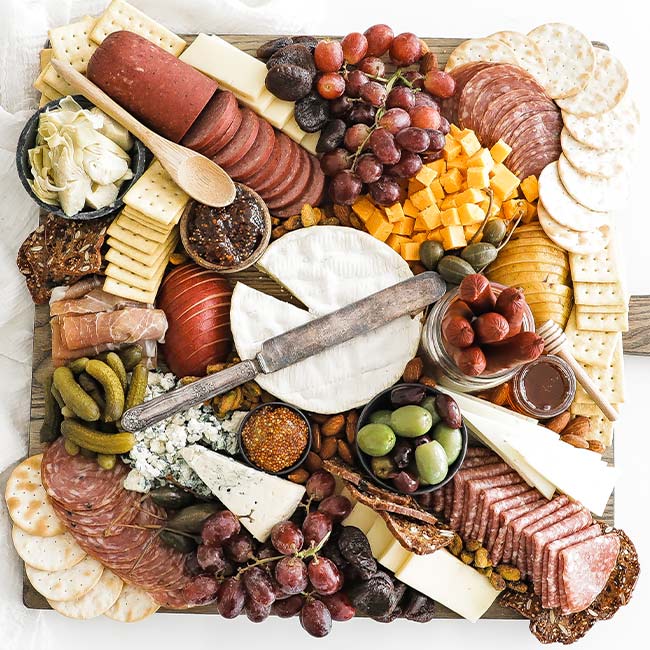
A stunning charcuterie board featuring a diverse selection of cured meats, artisanal cheeses, fresh fruits, and accompaniments
Selecting the Right Ingredients
The foundation of any charcuterie board is its ingredients. Choosing the right cured meats and cheeses is crucial for creating a balanced and flavorful experience. Start with a selection of cured meats such as prosciutto, salami, and chorizo. These meats offer a range of flavors from mild to spicy, catering to different palates.
Complement these with a variety of cheeses, including soft options like brie and hard cheeses like aged cheddar. The key is to provide a mix of textures and flavors that will appeal to your guests. Consider pairing your selection with a classic Negroni for an elevated experience that brings out the richness of the meats.
Cured Meats: A Flavorful Foundation
Cured meats are the heart of any charcuterie board. Prosciutto, with its delicate, salty flavor, pairs beautifully with sweet fruits like melon. Salami offers a robust, savory taste that complements sharp cheeses. For a spicy kick, include chorizo or soppressata.
When selecting meats, consider the balance of flavors and textures. Thinly sliced meats are ideal for easy pairing and layering, allowing guests to create their own combinations. If you're planning a special occasion, consider incorporating these selections into a romantic picnic setting for an unforgettable experience.
Cheese Selection: Balancing Textures
Cheese is a vital component of a charcuterie board, offering a creamy contrast to the meats. Soft cheeses like brie or camembert provide a rich, buttery texture, while hard cheeses like parmesan add a sharp, nutty flavor. Include a blue cheese for those who enjoy bold, tangy tastes.
When arranging cheeses, consider their shapes and colors to create an appealing visual display. Offer a variety of knives for easy serving and encourage guests to explore different pairings. For cheese lovers who want to explore beyond the board, a decadent baked cheesecake can make a wonderful dessert complement to your savory selections.
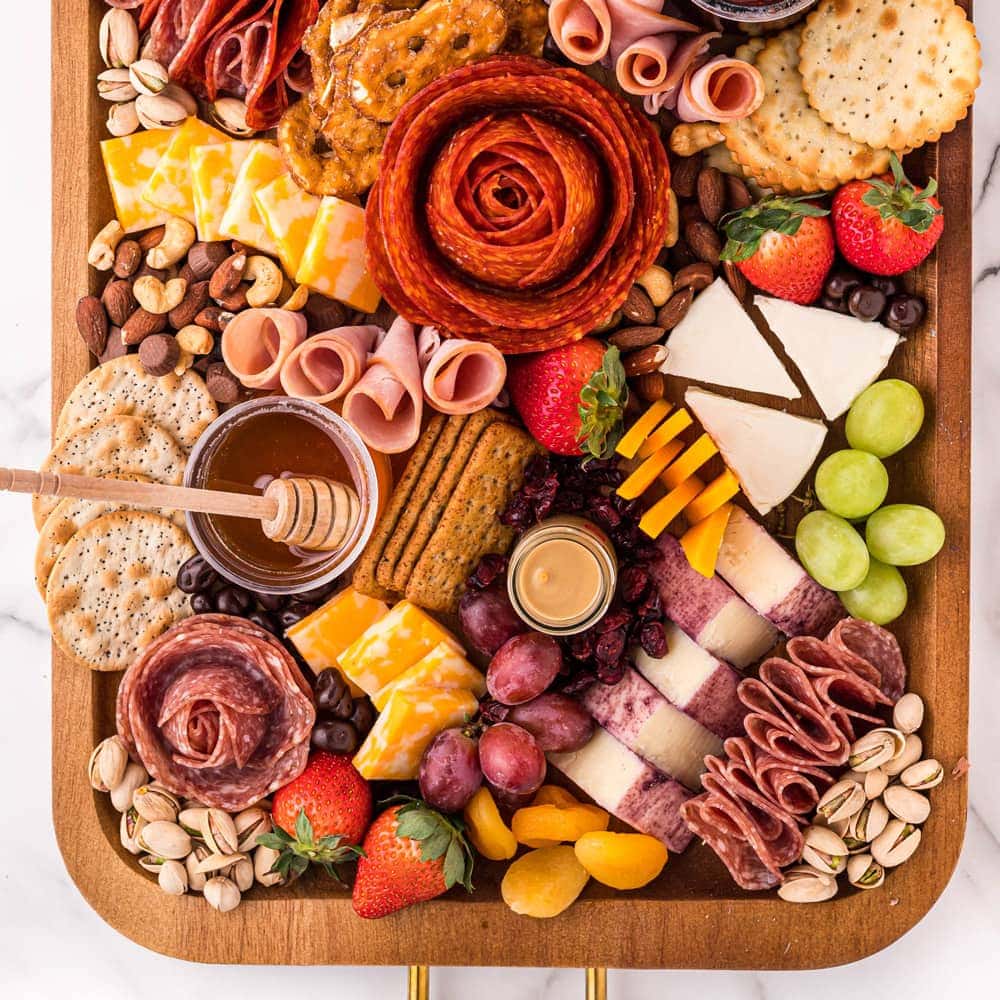
An artful arrangement of prosciutto, salami, chorizo alongside brie, aged cheddar, and blue cheese
Enhancing with Accompaniments
Accompaniments are essential for adding variety and interest to your charcuterie board. Fruits, nuts, and condiments not only enhance the flavors of the meats and cheeses but also add color and texture. Fresh fruits like grapes, figs, and berries provide a sweet contrast, while dried fruits like apricots and dates offer a chewy texture.
Nuts such as almonds and walnuts add a satisfying crunch, and condiments like honey, mustard, and chutney bring additional layers of flavor. These thoughtful additions transform a simple meat and cheese selection into a comprehensive culinary experience that will impress even the most discerning guests.
Fruits and Nuts: Adding Sweetness and Crunch
Fruits and nuts are perfect for balancing the savory elements of a charcuterie board. Grapes and figs are classic choices, offering sweetness and juiciness. Dried apricots and dates provide a chewy texture that pairs well with creamy cheeses. Nuts like almonds and walnuts add a crunchy element, enhancing the overall texture of the board.
Consider seasonal fruits to add freshness and color, making your board visually appealing and delicious. The contrast between the sweet, juicy fruits and the savory meats creates a harmonious balance that elevates the entire charcuterie experience to new heights.
Condiments: Elevating Flavors
Condiments are the secret to elevating the flavors of your charcuterie board. Honey and fig jam add sweetness that complements salty meats and cheeses. Mustard provides a tangy contrast, while chutney offers a spicy-sweet kick. Arrange condiments in small bowls or ramekins, allowing guests to add them to their plates as desired.
Encourage experimentation with different combinations to discover new flavor profiles. Just as a classic Old Fashioned is enhanced by its garnishes, your charcuterie board reaches its full potential when complemented by the right condiments.
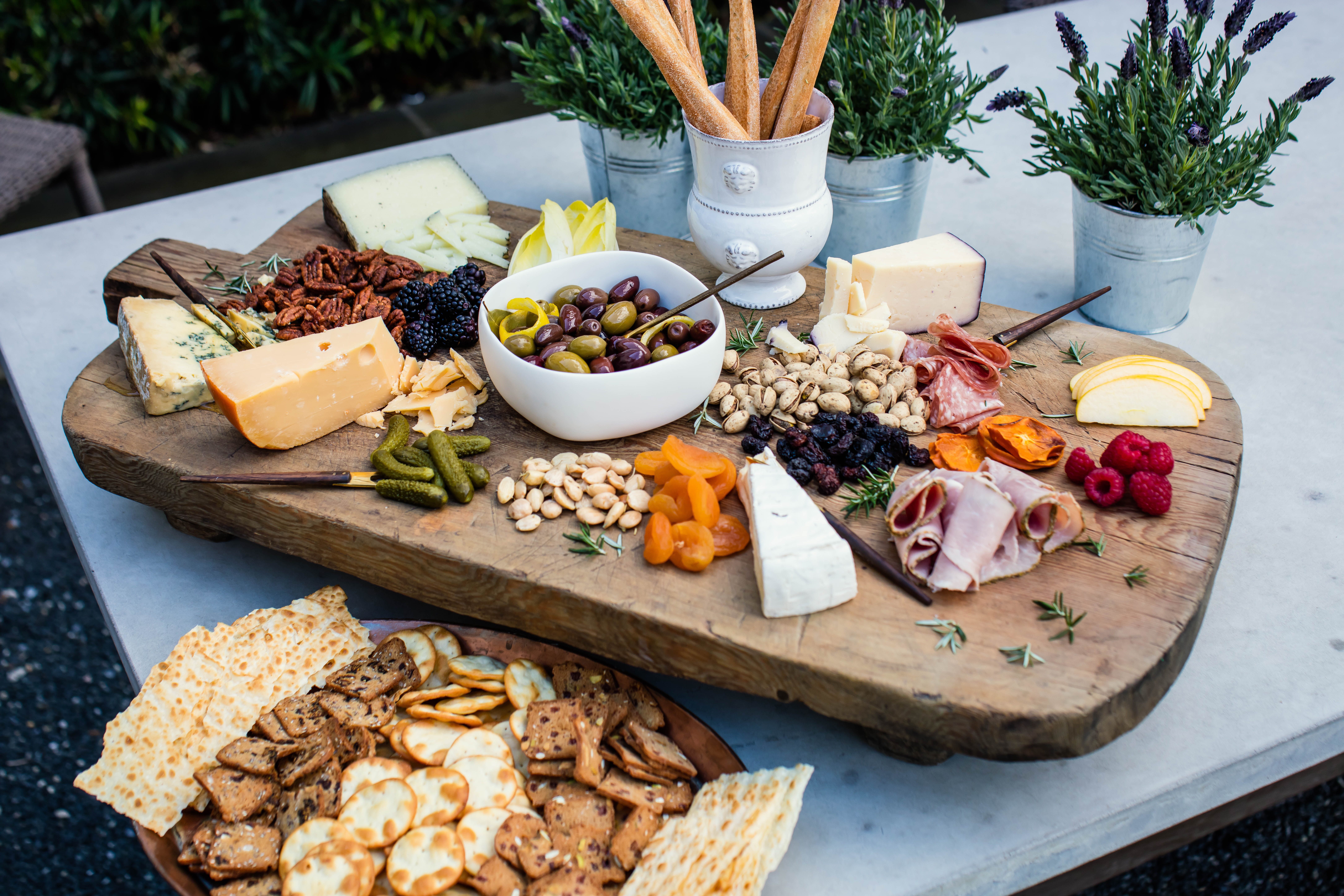
Colorful accompaniments including grapes, figs, dried apricots, almonds, honey, and mustard
Mastering Presentation Techniques
The presentation of a charcuterie board is as important as its ingredients. A well-arranged board is visually appealing and invites guests to explore and enjoy. Start by selecting a large wooden board or platter as your base. Arrange the meats and cheeses in clusters, leaving space for accompaniments.
Use small bowls for condiments and scatter fruits and nuts throughout the board. Consider the colors and shapes of each component to create a balanced and attractive display. Remember that people eat with their eyes first, so take time to craft a presentation that will wow your guests before they take their first bite.
Arranging for Visual Appeal
Arranging a charcuterie board is an art form. Begin by placing larger items like cheeses and bowls of condiments. Fill in the gaps with meats, folding or rolling them for visual interest. Scatter fruits and nuts to add color and texture. Consider using edible flowers or fresh herbs for a pop of color.
The goal is to create a board that is both beautiful and inviting, encouraging guests to sample and savor each element. Varying heights and textures creates dimension and visual interest, making your board not just a meal but also a conversation piece.
Creating a Theme: From Classic to Creative
Themes can transform a charcuterie board from simple to spectacular. A classic Italian theme might include prosciutto, mozzarella, and olives, while a breakfast board could feature smoked salmon, cream cheese, and bagels.
For a dessert board, consider chocolate, berries, and sweet spreads. Tailor your board to the occasion and your guests' preferences, ensuring a memorable and enjoyable experience for all. Seasonal themes incorporating holiday elements can also add a festive touch to your gathering, making your charcuterie board the centerpiece of celebration.
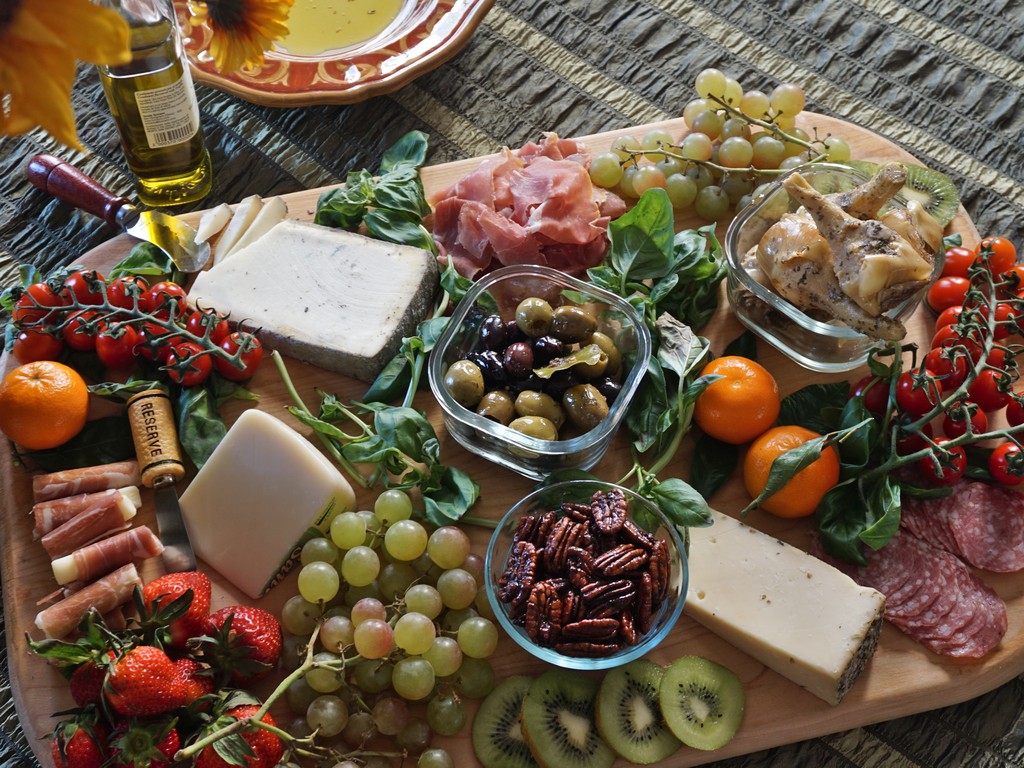
An Italian-themed charcuterie board featuring prosciutto, mozzarella, olives, and sun-dried tomatoes
Tips for Successful Entertaining
A charcuterie board is a versatile and convenient option for entertaining, allowing hosts to prepare in advance and enjoy the event. To ensure success, consider the number of guests and their dietary preferences. Offer a variety of options to cater to different tastes, including vegetarian and gluten-free choices.
Prepare the board ahead of time, covering it with plastic wrap to keep it fresh until guests arrive. Provide plenty of napkins and small plates for easy serving. With proper planning, your charcuterie board becomes an effortless centerpiece that allows you to focus on enjoying your guests' company.
Catering to Dietary Preferences
When planning a charcuterie board, it's important to consider dietary restrictions and preferences. Include vegetarian options like hummus and roasted vegetables, and offer gluten-free crackers or bread. Label items clearly to help guests make informed choices.
By accommodating different needs, you ensure that everyone can enjoy the board and feel included in the celebration. This thoughtful approach to hospitality will be appreciated by your guests and elevate your reputation as a considerate and capable host.
Preparing Ahead for Stress-Free Hosting
Preparation is key to stress-free entertaining. Assemble your charcuterie board a few hours before the event, covering it with plastic wrap to maintain freshness. Arrange the board on a sturdy surface, ensuring it is easily accessible to guests. Provide plenty of napkins and small plates for serving.
By preparing in advance, you can focus on enjoying the event and spending time with your guests instead of being stuck in the kitchen. This approach allows you to be present and engaged throughout your gathering, creating meaningful connections while your charcuterie board does the heavy lifting.
Conclusion
Creating the perfect charcuterie board is an art that combines culinary skill with creativity. By selecting a diverse range of cured meats, cheeses, and accompaniments, you can craft a board that delights the senses and satisfies the palate. Presentation is key, with careful arrangement enhancing the visual appeal and inviting guests to explore.
As you plan your next gathering, consider the endless possibilities of charcuterie boards, from classic themes to innovative creations. For a truly romantic occasion, explore our guide to charcuterie picnic date ideas that will elevate your culinary adventure. Embrace the opportunity to showcase your culinary talents and create a memorable experience for your guests. Start crafting your perfect charcuterie board today and elevate your entertaining game to new heights.
Frequently Asked Questions
A well-balanced charcuterie board should include a variety of cured meats (like prosciutto, salami, and chorizo), diverse cheeses (ranging from soft brie to hard aged cheddar), accompaniments (such as fresh and dried fruits, nuts, olives), crackers or bread, and condiments (honey, mustard, jam). The key is diversity in flavors, textures, and colors to create an engaging culinary experience.
For a main course charcuterie board, plan for about 3-4 ounces of meat and 2-3 ounces of cheese per person. As an appetizer, reduce these amounts by half. Include approximately 1-2 ounces each of accompaniments like fruits and nuts per person. Adjust based on your event duration, time of day, and whether other food will be served. It's better to have slightly too much than too little, as leftovers can be enjoyed later.
The charcuterie board can be partially prepared up to 24 hours in advance. Set out the board with non-perishable items like nuts and dried fruits, and prepare bowls for condiments. Slice cheeses and meats up to 4 hours before serving and keep covered in the refrigerator. Assemble the complete board about 30-60 minutes before guests arrive, allowing cheeses to come to room temperature for optimal flavor. Cover with plastic wrap until ready to serve.
To create a themed charcuterie board, select ingredients that align with your chosen theme. For an Italian board, include prosciutto, salami, mozzarella, parmesan, olives, and sun-dried tomatoes. A Mediterranean theme might feature feta, hummus, pita, and dolmas. For a breakfast board, incorporate smoked salmon, cream cheese, bagels, and fresh fruits. Match your board and serving utensils to the theme's aesthetic, and consider adding decorative elements that complement your chosen style.
Create a vegetarian-friendly board by focusing on a variety of cheeses, roasted vegetables (like marinated artichoke hearts, roasted red peppers, and grilled zucchini), dips (hummus, baba ganoush, tzatziki), olives, nuts, fresh and dried fruits, and assorted crackers and breads. Add interesting plant-based protein options like marinated tofu or tempeh, and incorporate flavorful spreads such as olive tapenade or sun-dried tomato pesto to add depth and variety.